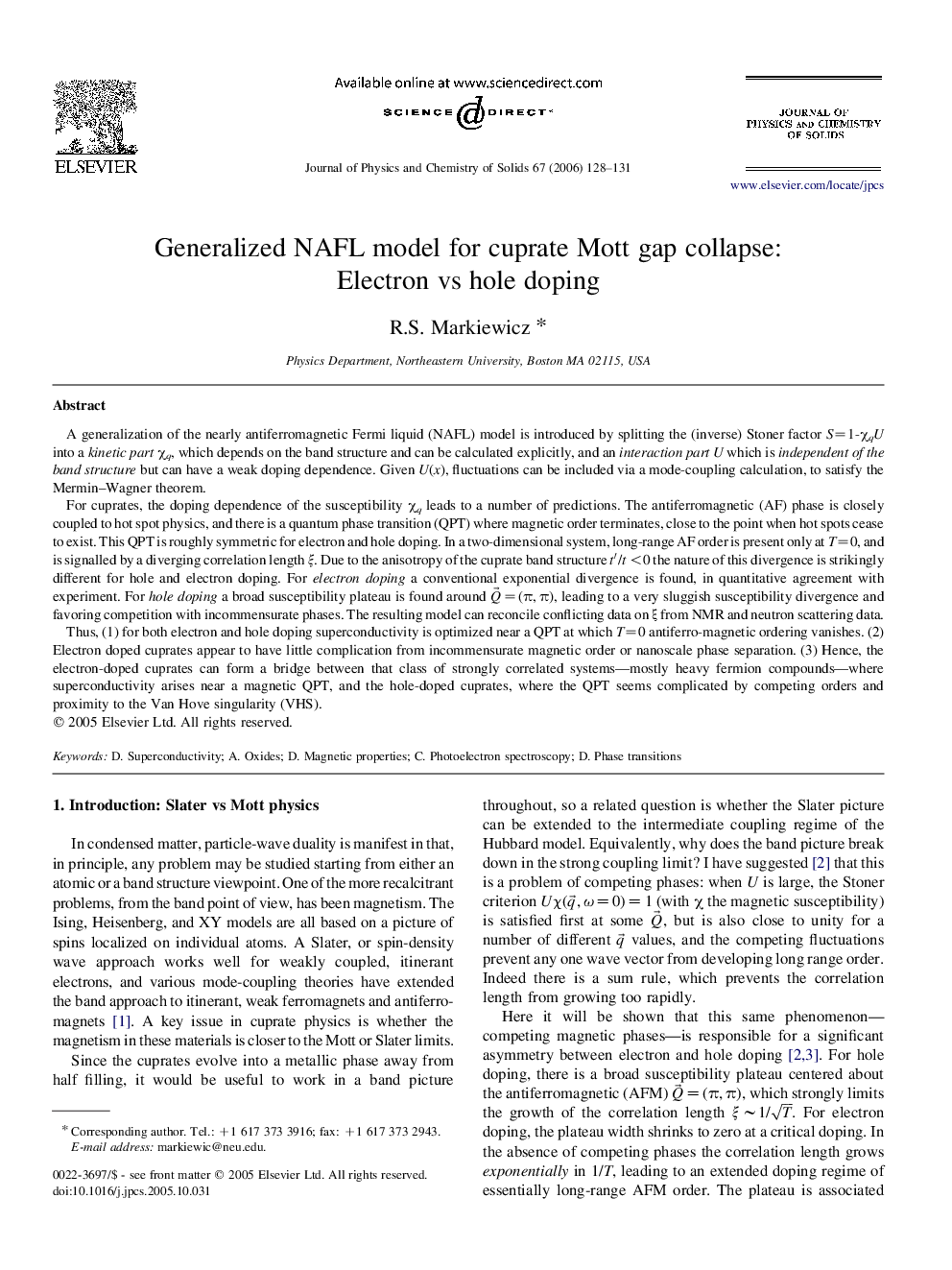| کد مقاله | کد نشریه | سال انتشار | مقاله انگلیسی | نسخه تمام متن |
|---|---|---|---|---|
| 1518907 | 1511629 | 2006 | 4 صفحه PDF | دانلود رایگان |

A generalization of the nearly antiferromagnetic Fermi liquid (NAFL) model is introduced by splitting the (inverse) Stoner factor S=1-χqU into a kinetic part χq, which depends on the band structure and can be calculated explicitly, and an interaction part U which is independent of the band structure but can have a weak doping dependence. Given U(x), fluctuations can be included via a mode-coupling calculation, to satisfy the Mermin–Wagner theorem.For cuprates, the doping dependence of the susceptibility χq leads to a number of predictions. The antiferromagnetic (AF) phase is closely coupled to hot spot physics, and there is a quantum phase transition (QPT) where magnetic order terminates, close to the point when hot spots cease to exist. This QPT is roughly symmetric for electron and hole doping. In a two-dimensional system, long-range AF order is present only at T=0, and is signalled by a diverging correlation length ξ. Due to the anisotropy of the cuprate band structure t′/t <0 the nature of this divergence is strikingly different for hole and electron doping. For electron doping a conventional exponential divergence is found, in quantitative agreement with experiment. For hole doping a broad susceptibility plateau is found around Q→=(π,π), leading to a very sluggish susceptibility divergence and favoring competition with incommensurate phases. The resulting model can reconcile conflicting data on ξ from NMR and neutron scattering data.Thus, (1) for both electron and hole doping superconductivity is optimized near a QPT at which T=0 antiferro-magnetic ordering vanishes. (2) Electron doped cuprates appear to have little complication from incommensurate magnetic order or nanoscale phase separation. (3) Hence, the electron-doped cuprates can form a bridge between that class of strongly correlated systems—mostly heavy fermion compounds—where superconductivity arises near a magnetic QPT, and the hole-doped cuprates, where the QPT seems complicated by competing orders and proximity to the Van Hove singularity (VHS).
Journal: Journal of Physics and Chemistry of Solids - Volume 67, Issues 1–3, January–March 2006, Pages 128–131